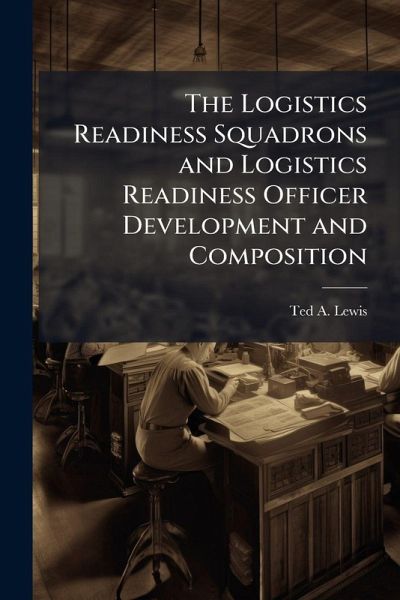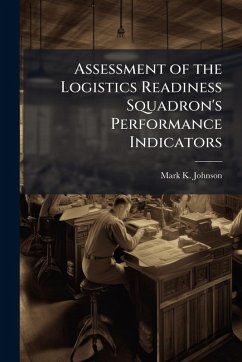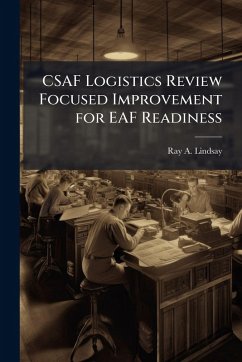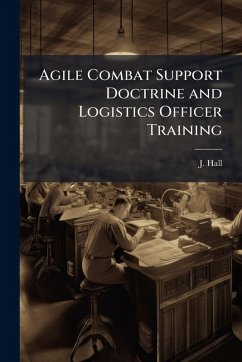
The Logistics Readiness Squadrons and Logistics Readiness Officer Development and Composition

PAYBACK Punkte
7 °P sammeln!
The Air Force has appropriately organized and located the Logistics Readiness Squadron (LRS) and Logistics Readiness Officers (LRO) within the Mission Support Group (MSG) to optimize mission accomplishment enabled by process-oriented management, practical span of control, and effective officer development to operate in both Air Force and joint arenas. Now more than ever our Air Force logistics community needs an era of organizational stability. Time is what is needed most to develop and mature both breadth and depth of our young LRO and the newly blueprinted LRS. The current logistics structur...
The Air Force has appropriately organized and located the Logistics Readiness Squadron (LRS) and Logistics Readiness Officers (LRO) within the Mission Support Group (MSG) to optimize mission accomplishment enabled by process-oriented management, practical span of control, and effective officer development to operate in both Air Force and joint arenas. Now more than ever our Air Force logistics community needs an era of organizational stability. Time is what is needed most to develop and mature both breadth and depth of our young LRO and the newly blueprinted LRS. The current logistics structure develops Air Force LROs to be multi-role, broad thinkers who view logistics as an enterprise -- not parceled out or separated between Groups at the wing level. Therefore, any future plans for change must be from a process-improvement vice organizational structure mindset. This work has been selected by scholars as being culturally important, and is part of the knowledge base of civilization as we know it. This work was reproduced from the original artifact, and remains as true to the original work as possible. Therefore, you will see the original copyright references, library stamps (as most of these works have been housed in our most important libraries around the world), and other notations in the work. This work is in the public domain in the United States of America, and possibly other nations. Within the United States, you may freely copy and distribute this work, as no entity (individual or corporate) has a copyright on the body of the work. As a reproduction of a historical artifact, this work may contain missing or blurred pages, poor pictures, errant marks, etc. Scholars believe, and we concur, that this work is important enough to be preserved, reproduced, and made generally available to the public. We appreciate your support of the preservation process, and thank you for being an important part of keeping this knowledge alive and relevant.












